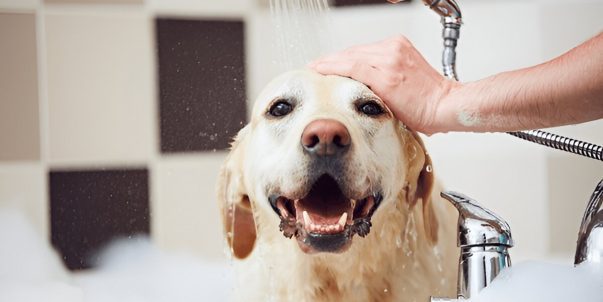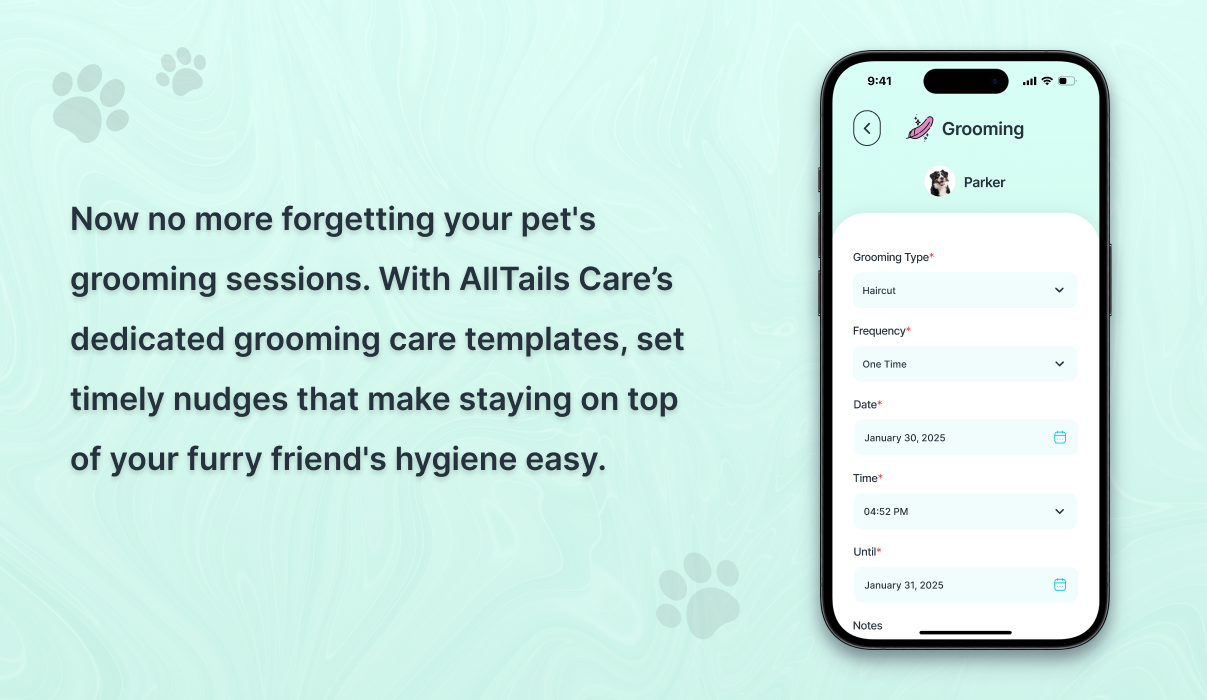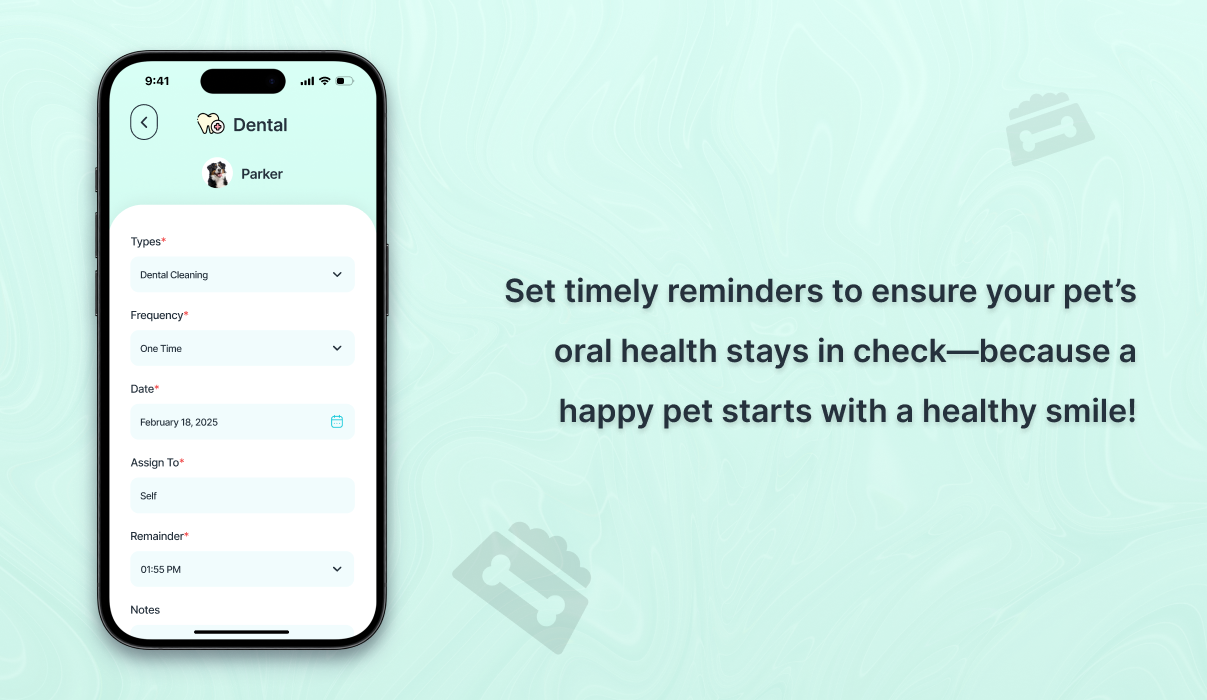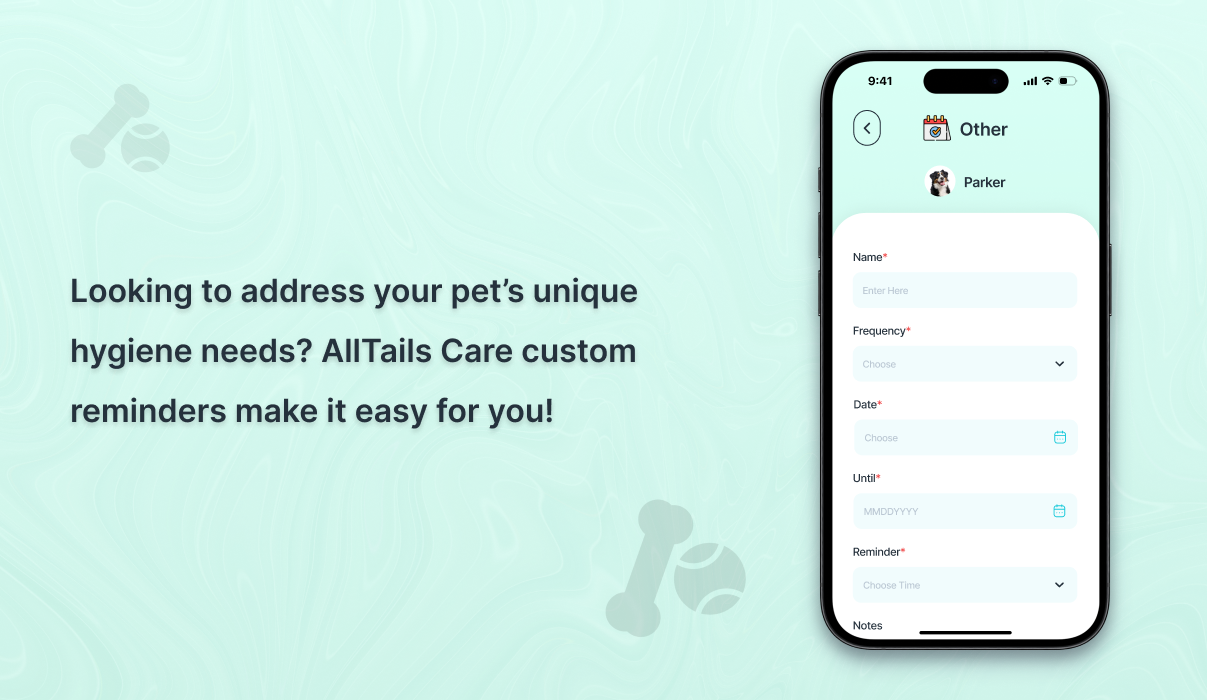
Keeping your furry friends joyful and safe begins with a little TLC—including hygiene! Proper hygiene prevents illness and ensures pets look and feel their absolute best.
Maintaining your pet’s hygiene is equally important for the health and safety of your family as you interact with them on a daily basis.
Just a few simple habits and thoughtful care can keep your pet happy, healthy and your home fresh. Let’s discuss stress-free and effective pet hygiene tips!
Top 7 Pets Hygiene Tips
1. Pet Hygiene: Grooming Tips
The importance of pet hygiene goes beyond cleanliness—regular grooming is essential to keep your furry friend healthy, prevent skin issues, and ensure their overall well-being. Follow below grooming techniques to keep your pet happy every day:
- Brushing
Regular brushing removes loose fur and dirt, keeping your pet’s coat healthy. The frequency of brushing and bathing varies based on breed and coat type. Dogs with short coats may require less brushing, whereas long-haired breeds could benefit from frequent grooming sessions. - Routine Bathing
Consider vet-recommended pet-safe products for bathing. How often you should bathe your dog or any other pet depends on various factors. Stick to a specific schedule that’s appropriate to your pet’s need as bathing too frequently will deplete their natural oils. For example, most cats must be bathed every 4-6 weeks, according to research. - Hair and Nail Trimming
Carefully trim extra fur for cleanliness. Similarly, untrimmed nails can cause discomfort or change how your pet walks. Timely nail trimming can prevent these issues. - Cleaning Eyes and Ears
Check your pet’s eyes for discharge or redness, and gently clean debris with a wet towel. To remove dirt and wax from ears, use a veterinarian-approved cleaning advice. Never insert anything deep into their ear canals, as it could hurt. - Proper Drying After Bathing
Dry your pet well after bathing, especially in winter. Moist fur can make them feel chilly and increase the risk of catching a cold. To dry them fully, use a clean towel or a pet-safe drier with a low-heat setting. - Paw Care
Paws endure a lot—from hot pavement to muddy trails. So, consider cleaning their paws often. For extra protection, use vet-recommended paw balms.
2. Pet Hygiene: Oral Hygiene
According to a study, 73% of cat owners admitted that they never brush their cats’ teeth. This shouldn’t be your scenario. Good dental care is essential for a pet’s health. Consider the below suggestions for better oral health.
- Brushing Teeth
Use a soft toothbrush and pet toothpaste to brush their teeth. Stay away from human toothpaste since it can be harmful. - Dental Chews and Toys
If brushing seems difficult, provide dental chews designed to prevent plaque development. These might be a fun and effective technique to help them maintain their oral hygiene. - Watch for Warning Signs
Check for bad breath, inflamed gums, and chewing difficulties—these can indicate dental issues. Consult your vet immediately if you notice any of these issues.
3. Pet Hygiene: Clean Living Environment
A clean home protects your pet from sickness. Regular care of their living spaces makes a significant difference.
- Sanitize Bedding and Spaces
Wash and sanitize your pet’s bedding, blankets, and cushions weekly to remove dirt, smells, and bacteria. If you’re a fish owner, consider regularly cleaning the tank to maintain the quality of the water. - Food and Water Bowls
Wash their bowls daily with warm water and mild soap. Dirty bowls can accumulate bacteria, leading to stomach issues. - Manage Hair and Dander
Regular vacuuming helps keep your home free of pet hair and allergens. Consider using a vacuum designed for this purpose. - Wash Their Clothes and Towels
Routinely wash your pet’s clothes or towels. Clean, fresh fabrics prevent skin irritation and maintain hygiene. - Clean Their Toys
Toys can collect dirt over time. Wash them with pet-safe cleaning solutions to ensure they remain safe for playing.
4. Pet Hygiene: Waste Management
Poop management isn’t glamorous, but it’s necessary for your pet’s health and your home’s comfort. Cleaning waste areas prevent bad odors and bacteria.
- Cleaning Litter Boxes Daily
Don’t wait for a stinky reminder to clean your pet’s litter box. Cleaning them daily prevents bad smells and makes your pet delighted with using their spaces. Regular cleaning also reduces the spread of harmful microbes. - Proper Disposal Methods
Use sealed bags to reduce pet waste odor and pests. For biodegradable options, look into compostable waste bags designed for pet use. - Training Dogs for Outdoor Hygiene
Train your pets to take pee breaks outside. Reward them or praise them for going to the right spot. Use a scoop or bag to keep public places clean and enjoyable for everyone.
5. Pet Hygiene: Maintain Hygiene of Food Storage
What your pet eats and drinks impacts their health. Proper storage and cleanliness ensure their meals are safe to consume.
- Store Food Properly
Dry food should be stored in airtight containers to avoid pests and moisture. Refrigerate wet food leftovers and discard them in a timely manner to avoid spoilage. - Fresh and Clean Water Every Day
Your pet needs clean water just as much as you do. Apart from cleaning their bowls, consider using filtered water for added safety, especially in areas with hard water.
6. Pet Hygiene: Keep Up with Your Hygiene
Caring for pets includes keeping yourself and your family safe, too. Hygiene habits are key, particularly after dealing with pets or cleaning their spaces.
- Wash Your Hands Regularly
After cleaning your pet’s cage, litter box, or bedding, wash your hands with vet-recommended hand wash. This eliminates the risks of germs and allergens. - Teach Your Children Proper Hygiene
Children may overlook the importance of handwashing after playing with pets. Teach them how to properly wash their hands, especially before meals.
7. Pet Hygiene: Specific Hygiene Needs for Different Pets
The hygiene needs of each pet vary. Pets like hamsters and rabbits need clean cages, water bottles, and food bowls to avoid odors and bacteria.
At the same time, birds require clean cages, perches, and toys, as well as occasional baths or misting to keep their feathers healthy. Meet these needs to keep your pet safe and clean. And remember, if you have a senior pet, give them extra care and attention!
Conclusion
Caring for your pet’s hygiene is more than just a routine—it’s a way to show your love and ensure their well-being. A clean and healthy pet is a joyful companion, one who flourishes in a suitable environment.
Strictly avoid any random pet care advice on social media. Always consult a certified veterinarian for input on pet hygiene and other health-related aspects.
Also, for the best pet care management support, download the AllTails Care app today! Our app is the one-stop solution for all your pet care needs, whether you have one pet or five.
With features like timely reminders for baths, grooming, dental care, and even fish tank cleaning, AllTails Care ensures every hygiene need is covered. Say goodbye to missed care routines and keep your pets happy, healthy, and sparkling clean!
Download the AllTails Care app now and experience stress-free pet management. Click on the link given below to download the app!
iOS: https://shorturl.at/rrZw1
Android: https://shorturl.at/VJQoc


